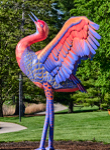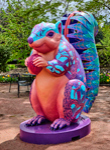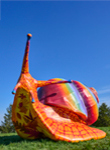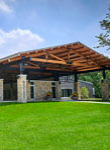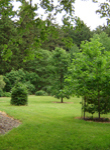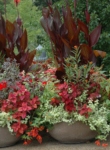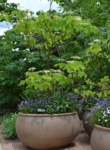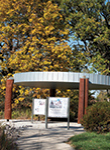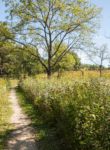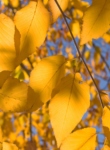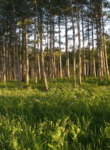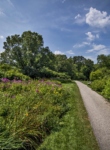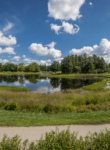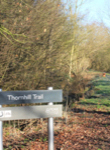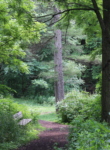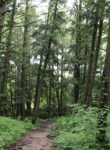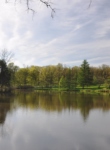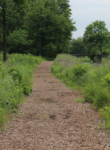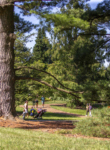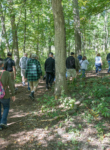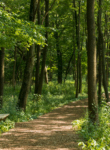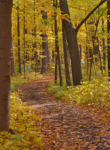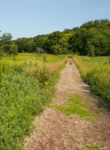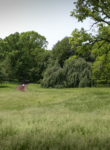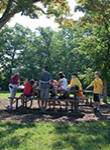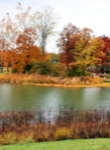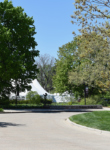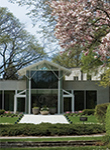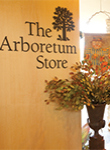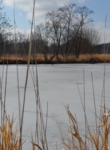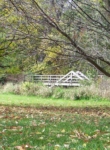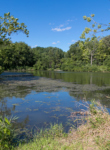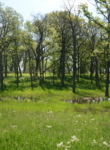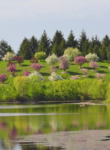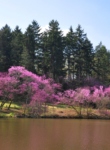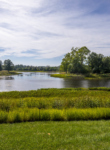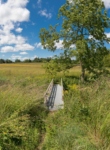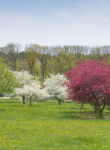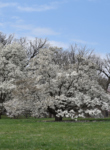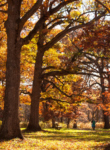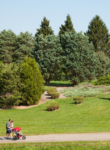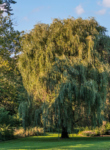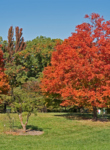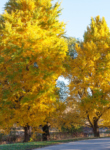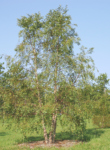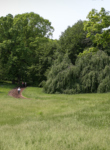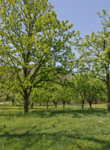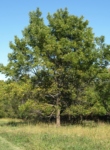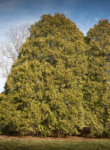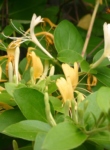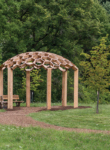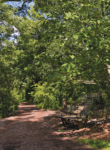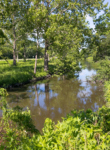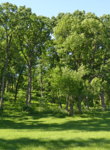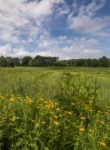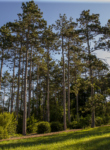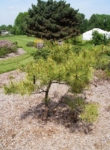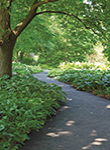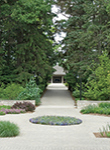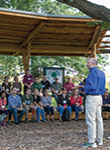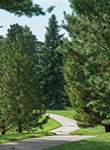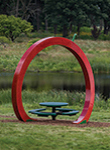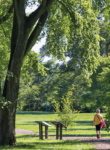White poplar is a potentially invasive plant. An invasive plant is a plant species that is non-native to the location being considered and whose presence and spread negatively impacts (or is likely to impact) ecological, economic, or human health. Data collected at The Morton Arboretum show that white poplar is potentially invasive on the Arboretum grounds. This means that the species has established populations that often occur at considerable distance from the contributing collections plants and/or are growing in uncultivated areas on or outside of the Arboretum’s property, or the established populations may be consistently managed or controlled to prevent spread within the Arboretum.
White poplar spreads primarily by suckering and, to a lesser degree, by seed produced from hybridizing with other Populus species. It grows best in sunny sites, and so it often grows along the outer edge of woodlands, disrupting their progression. White poplar is also a common invader in disturbed sites and vacant lots. It prefers moist to wet sites and so can be found in riparian areas. This species is native to Europe and Asia, but was introduced into the U.S. as both an ornamental tree and a windbreak tree. White poplar can now be found growing wild throughout the United States. Due to extensive root suckering, white poplar is able to reproduce in large stands and can shade out native plants. This reduces species diversity and alters habitat.
There are a number of native and non-native species that could be used in place of white poplar. More desirable species may be found using the Search Trees and Plants page of the Arboretum website. Before purchasing or planting, be sure to check for any local or state guidelines on these species, and make sure that the plant is suitable for its habitat by checking its attributes at mortonarb.org or plants.usda.gov.
- Family (English) Willow
- Family (botanic) Salicaceae
- Tree or plant type Tree
- Foliage Deciduous (seasonally loses leaves)
- Native locale Non-native
- Size range Large tree (more than 40 feet)
- Mature height 40-70 feet
- Mature width 40-70 feet
- Light exposure Full sun (6 hrs direct light daily)
- Hardiness zones Zone 3, Zone 4, Zone 5 (Northern Illinois), Zone 6 (City of Chicago), Zone 7, Zone 8
- Soil preference Moist, well-drained soil, Wet soil
- Drought tolerance Moderately tolerant
- Other tolerances Alkaline soil, clay soil, Occasional flooding, Road salt, Wet sites
- Season of interest early winter, midwinter, late winter
- Flower color and fragrance Inconspicuous
- Shape or form Broad, Round
- Growth rate Fast
- Transplants well Yes
- Planting considerations Aggressive, Excessive sucker growth, Messy fruit/plant parts, Weak wood and branch structure
- Wildlife Browsers, Nesting birds, Small mammals
- Has cultivars Yes
